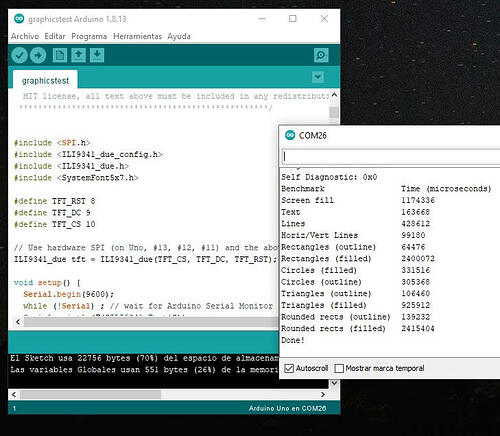My apologies. I have only used Red SPI displays with proper 3.3V Arduinos.
I own a Nano-Every but since it is 5V I have never used any of my SPI Protoshields with it.
Anyway, I plugged the Red Display into a breadboard. 10k Series resistors in the CS, RST, DC, MOSI, SCK, LED, MISO lines.
I amended the Adafruit example:
#define TFT_RST 8
#define TFT_DC 9
#define TFT_CS 10
#define TFT_MOSI 11
#define TFT_MISO 12
#define TFT_CLK 13
// Use hardware SPI (on Uno, #13, #12, #11) and the above for CS/DC
//Adafruit_ILI9341 tft = Adafruit_ILI9341(TFT_CS, TFT_DC, TFT_RST); // <<<<<<<<
// If using the breakout, change pins as desired
Adafruit_ILI9341 tft = Adafruit_ILI9341(TFT_CS, TFT_DC, TFT_MOSI, TFT_CLK, TFT_RST, TFT_MISO);
The HW_SPI constructor did not work !!
So I tried the SW_SPI constructor. Which worked but very SLOW.
I then tried your UCG_Box3D.ino which fails with the HW_SPI constructor but is fine with the SW_SPI constructor (but SLOW):
Ucglib_ILI9341_18x240x320_SWSPI ucg(/*sclk=*/ 13, /*data=*/ 11, /*cd=*/ 9, /*cs=*/ 10, /*reset=*/ 8);
I am not sure what the HW_SPI problem is.
I will investigate later.
No, I am not going to try 1k0 series resistors because it would damage my display.
If you own six 4k7 resistors I will replace my 10k with 4k7.
David.









